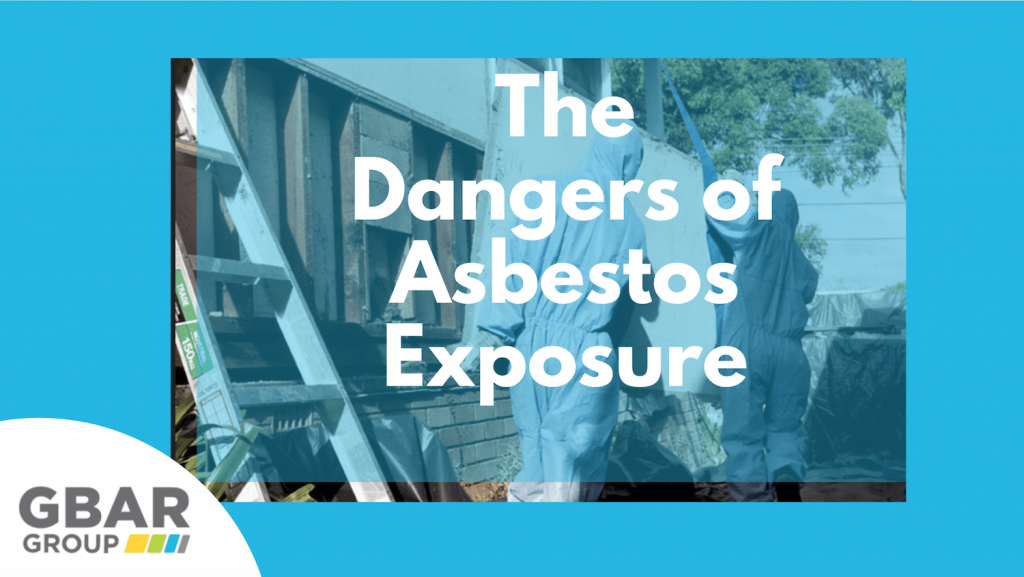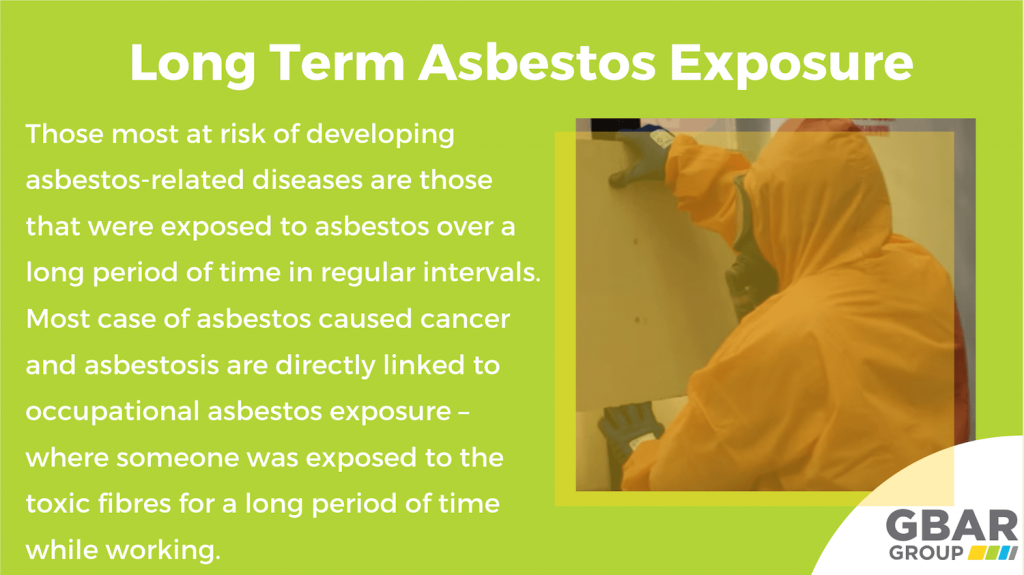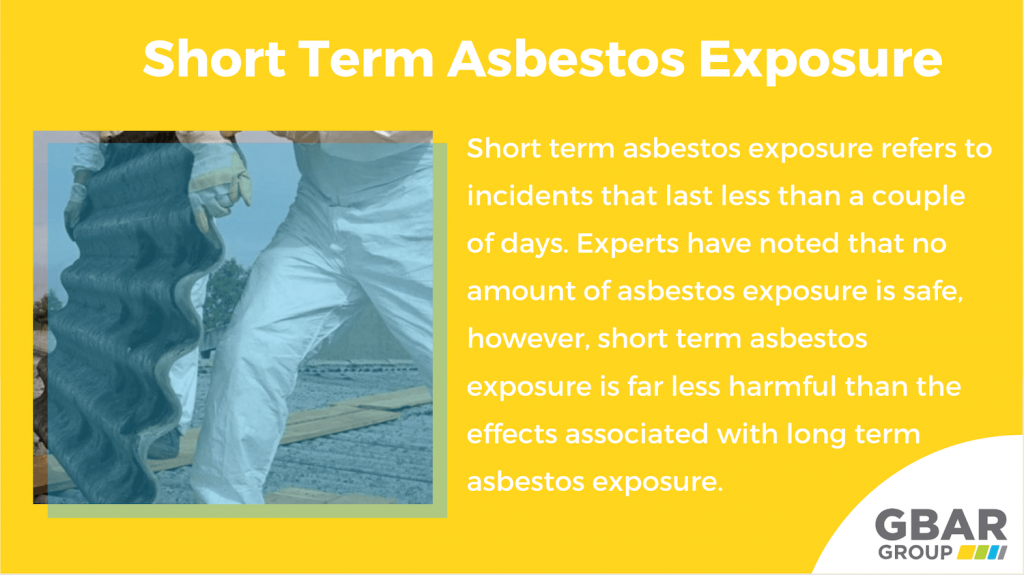
Asbestos is an incredibly dangerous material. All handling and incidental exposure to friable asbestos fibres being fraught with risk.
The long-term dangers of Asbestos are well documented and have been directly linked to detrimental health effects such as asbestosis, mesothelioma, and lung cancer. Something many people fail to realise is, while there is no ‘safe’ amount of asbestos contact, there are certain degrees of asbestos exposure.
Asbestos awareness extends far beyond where the mineral comes from and where it was previously used. Asbestos education includes an in-depth understanding of how it can affect a person, why it is unsafe, and an acknowledgement of the many different degrees of asbestos exposure.
Australia was known as one of the largest consumers of asbestos materials in the world. This statistic alone highlights the importance of prioritising asbestos awareness. Asbestos is said to remain in as many as 30% of all Australian homes, with its use being an almost guarantee in houses built before 1990.
As Australian residents, it’s important we have a wide-spread understanding of what makes asbestos dangerous to work towards asbestos exposure prevention in the future.
Why is Asbestos Dangerous?
There are many misconceptions about the dangers of asbestos. While there is a general awareness of the toxicity of asbestos fibres, not everyone is correctly educated on the facts about how asbestos can be dangerous.
Being near asbestos or around asbestos products is not automatically dangerous. What many people don’t understand is that harmful asbestos exposure only occurs when asbestos dust particles are inhaled and breathed in. If the asbestos materials are tightly bound, undisturbed and non-friable, they do not pose an airborne threat.
Asbestos exposure occurs when asbestos materials are raw, friable, or have been disturbed. These forms of asbestos allow for the fibres to be easily released into the air and become airborne. Once asbestos fibres are released, it’s very easy for asbestos exposure to occur; all someone has to do is breathe in, inhale, or ingest the raw asbestos fibres.
When asbestos-related diseases develop from asbestos exposure, it’s down to the accumulation of tiny microscopic asbestos fibres that have built up in a human’s lung tissue and membranes.
These needle-like fibres are invisible to the naked eye and never break down (hence why asbestos was heavily used for its durability properties). Over time, with greater asbestos exposure, the fibres accumulate in the lungs and begin to cause negative health effects.
Eventually, the fibres reach the ends of the small airways in the lungs, invade the pleura (the layer of protection around the lung and chest wall), and cause scarring, irritation and inflammation of the lungs. This is how asbestos-related diseases begin to develop.
What Makes Asbestos Dangerous?
There are a few danger factors that determine the likelihood of asbestos exposure contributing to health concerns.

1. Type of Asbestos
All forms of asbestos are dangerous; however, some types can be more harmful than others. The most common form, white asbestos (chrysotile), is among the most dangerous along with brown asbestos (amosite) and blue asbestos (crocidolite). Studies suggest crocidolite is the most harmful form of asbestos for human exposure.
2. Amount of Asbestos
Amount of asbestos refers to how much friable asbestos was airborne and inhaled. Large amounts of asbestos exposure occur when the air is visibly cloudy with raw asbestos dust fibres. In the case of disturbed asbestos-containing materials, the amount of asbestos will be dependent on how much was used to form the finished product.
3. Asbestos Exposure Time
How long did the exposure last? Whether it be a one-off quick exposure, or someone has been working and living in an asbestos-contaminated environment for an extended period of time, this may influence whether the asbestos contributes to health issues.
4. Genetics
A person’s genetics will determine how they are impacted by asbestos exposure. Not everyone who is heavily exposed to asbestos will develop a related illness. Researchers suspect genetic mutations may also play a role.
5. History
If someone has a history of smoking and is exposed to asbestos, the dangers of developing lung cancer are multiplied. Asbestos and tobacco work together to exacerbate the risks of developing lung problems. Generally speaking, asbestos-related diseases develop over time and can take up to 20 years to come to the surface. Often the symptoms of an asbestos-related disease
Asbestos Dangers from Long-Term Exposure

Those commonly developing asbestos-related diseases are those that were exposed to asbestos over a long period of time at regular intervals. Most cases of asbestos-caused cancer and asbestosis are directly linked to occupational asbestos exposure – where someone was exposed to the toxic fibres for a long period of time while working.
Occupational exposure commonly occurred nation-wide due to the sheer extensive abuse of asbestos materials. Asbestos was heavily used and incorporated into the construction, commercial, manufacturing and house-hold product industry. Factory workers, miners, construction workers and builders, were all unknowingly putting themselves at serious risk for years before the 1980s.
Family members of asbestos material workers also experienced regular exposure to the fibres through occupation exposure. Second-hand asbestos exposure would often occur when a worker brought asbestos dust fibres home from their workplace and contaminated the environment, where others would inhale the carried asbestos dust.
Short Term Asbestos Exposure Dangers

Short term asbestos exposure refers to incidents that last less than a couple of days. Experts have noted that no amount of asbestos exposure is safe, however, short term asbestos exposure is far less harmful than the effects associated with long term asbestos exposure.
Low levels of asbestos exposure rarely cause diseases, and one-off exposure is not a major danger – so if you incidentally come across asbestos as a one-off, you’re likely to be unaffected. However, asbestos exposure is cumulative, so low levels of asbestos exposure can add up over time and lead to long-term asbestos exposure health concerns.
One-time asbestos exposure is generally not a major risk, except in extreme circumstances. Natural disasters such as wildfires, hurricanes, floods and tornadoes can damage asbestos materials and lead to a short-term extreme dose of asbestos exposure among first responders, nearby residents, and communities.
Avoiding Asbestos Danger – How to Stay Safe
To protect yourself from asbestos exposure, you can take steps to become aware of what products were manufactured with asbestos in the past. Older houses and buildings were likely built with asbestos-related materials, so if you suspect you’re in danger of being exposed to asbestos fibres, have the materials tested.
To ensure fewer people are being exposed to and are handling asbestos materials, asbestos removal and abatement professionals are trained and licensed to safely remove and encapsulate asbestos.
If you suspect your home or commercial building contains asbestos, get in touch with the team at GBAR Group in Brisbane, Wollongong or Sydney today to set up an inspection. Don’t run the risk of putting yourself or others in danger – have asbestos inspected and removed as soon as possible.





